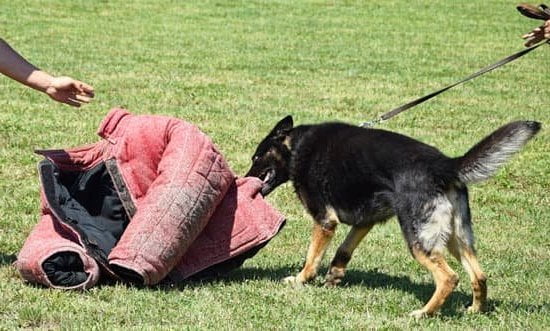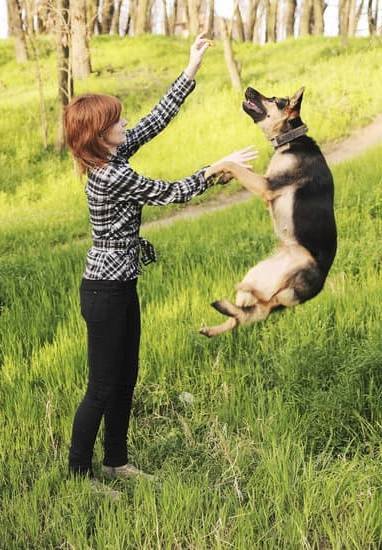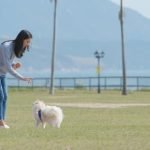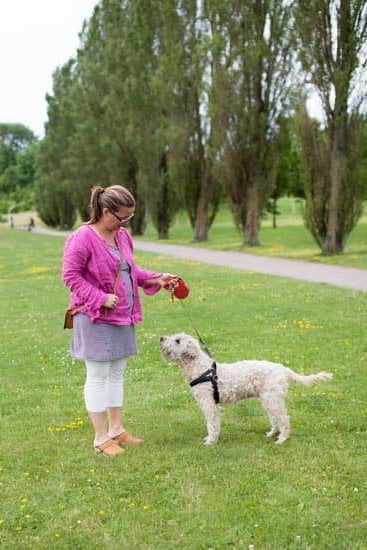Training your older dog can be a bit more challenging than training a young pup, but it’s definitely not impossible. In fact, with a bit of patience and understanding, you can have an obedient, well-behaved older dog in no time.
The first step in training an older dog is to establish yourself as the pack leader. This means being consistent with rules and expectations, and enforcing them consistently. It’s also important to provide plenty of positive reinforcement when your dog does something good.
Older dogs may have trouble learning new commands, so it’s important to start with basic commands and work your way up. Be patient, and take your time. Repetition is key when training an older dog.
If your dog is having trouble with housetraining, there are a few things you can do to help him/her understand where to go. For one, make sure your dog always has access to a designated potty area. When he/she does go in the right spot, praise and reward your dog with a treat. If you catch your dog in the act of going potty indoors, immediately say “NO” in a firm voice and take him/her outside to the designated spot.
Older dogs can still be trained to perform tricks, but you may have to start with easier tricks and work your way up. Again, repetition is key.
Training your older dog can be a challenging but rewarding experience. With a little time, patience, and understanding, you can have a well-behaved and obedient older dog.
How To Train New Puppy With Older Dog
If you have an older dog in your home, and are getting a new puppy, you may be wondering how to go about integrating the new pup into the pack. It can be a little tricky, but with patience and a little know-how, you can have them all playing together in no time.
The first step is to set some ground rules for the new pup. He needs to know that the pack leader is the older dog. You can do this by making the older dog the “alpha” in the house. This means that the older dog gets to eat first, sleep in the most comfortable spot, and has the final say in things. You can help reinforce this by not letting the new pup push the older dog around, and by making sure the older dog gets plenty of attention.
Next, you’ll want to start slowly desensitizing the new pup to the older dog. This means getting them used to each other’s presence, without actually interacting. You can do this by having the older dog nearby when the new pup is eating, playing, or going to the bathroom. Over time, you can start to let them get a little closer, until they’re finally playing together.
It’s important to keep in mind that puppies can be pushy, and may try to take control of the pack from the older dog. If this happens, you’ll need to step in and be the alpha again. Be sure to praise the older dog when he exhibits good behavior, and correct the new pup when he behaves badly. With a little patience and diligence, you can have a happy, well-adjusted pack of dogs in your home.
How To Crate Potty Train An Older Dog
If you have an older dog, you may be wondering how to potty train them. Luckily, the process is very similar to training a younger dog, and can be accomplished relatively easily with a bit of patience and consistency. The first step is to get your dog used to the idea of being in a crate. Start by putting them in the crate for very short periods of time (5-10 minutes) and gradually increase the amount of time they spend in the crate. Once they are comfortable being in the crate, you can begin using it as a place to house train them. Whenever you catch your dog going to the bathroom in the wrong place, immediately take them to the crate and praise them when they go in the crate. If they don’t go in the crate, don’t scold them; simply wait until they have to go to the bathroom again and try again.
Potty Training Older Dog
There comes a time in every dog’s life when they must be potty trained. For older dogs, this process can be a bit more difficult than it is for puppies. However, with patience and a little bit of effort, it is definitely possible.
The first step in potty training an older dog is to create a routine. This means taking your dog outside to pee and poop at specific times each day. It might also help to set a specific cue, such as taking your dog for a walk, to let them know it’s time to go to the bathroom.
If your dog is having trouble understanding where they’re supposed to go, you can start by placing a few pee pads in strategic spots around your home. As your dog begins to get the hang of things, you can slowly begin to wean them off of the pads.
It’s also important to be consistent with your training. If you allow your dog to pee inside one day, but then scold them for doing the same thing the next, they’re likely to become confused and frustrated.
Finally, be patient. This process can take a while, but with some perseverance, you’ll have a potty-trained dog in no time!
How To Potty Train Older Dogs
It can be a challenge to potty train an older dog, but it is definitely doable. Here are a few tips to help you get started:
1. Make sure your dog has plenty of opportunities to go outside. Take them for walks and let them run around in the yard.
2. Try to be consistent with your commands. When you take your dog outside, always say “go potty” or something similar.
3. Be patient. It may take a while for your dog to get the hang of things.
4. Reward your dog when they go potty in the right spot. Treats and positive reinforcement can be very helpful in training.
5. If all else fails, consider hiring a professional dog trainer. They can help you get your dog potty trained in no time.

Welcome to the blog! I am a professional dog trainer and have been working with dogs for many years. In this blog, I will be discussing various topics related to dog training, including tips, tricks, and advice. I hope you find this information helpful and informative. Thanks for reading!





